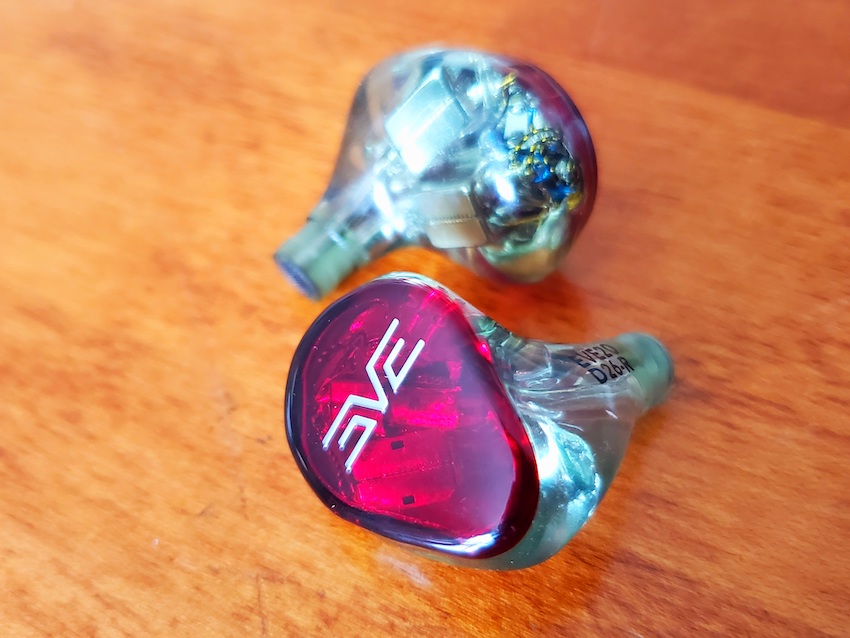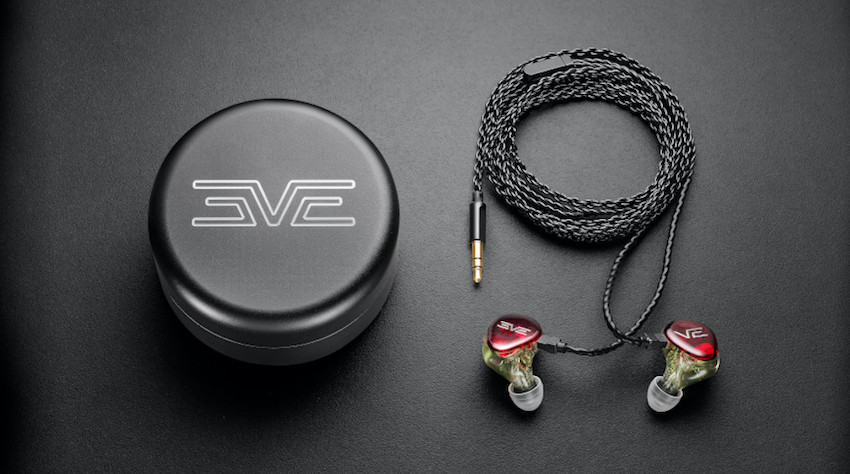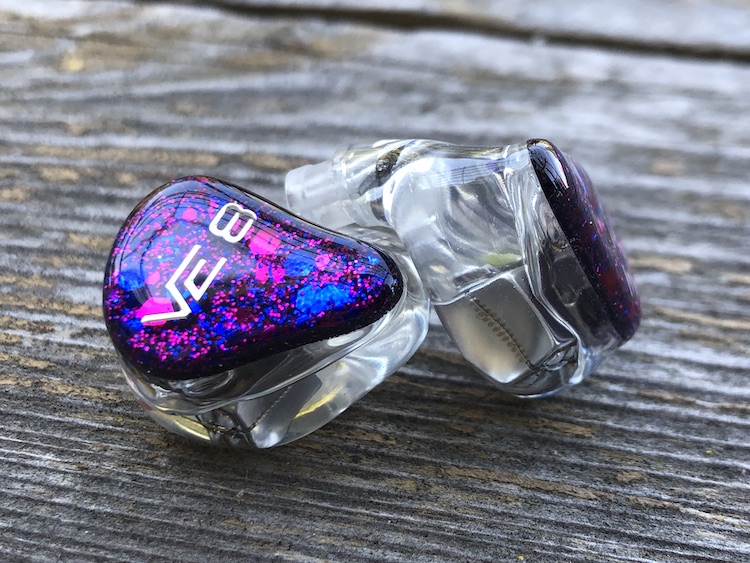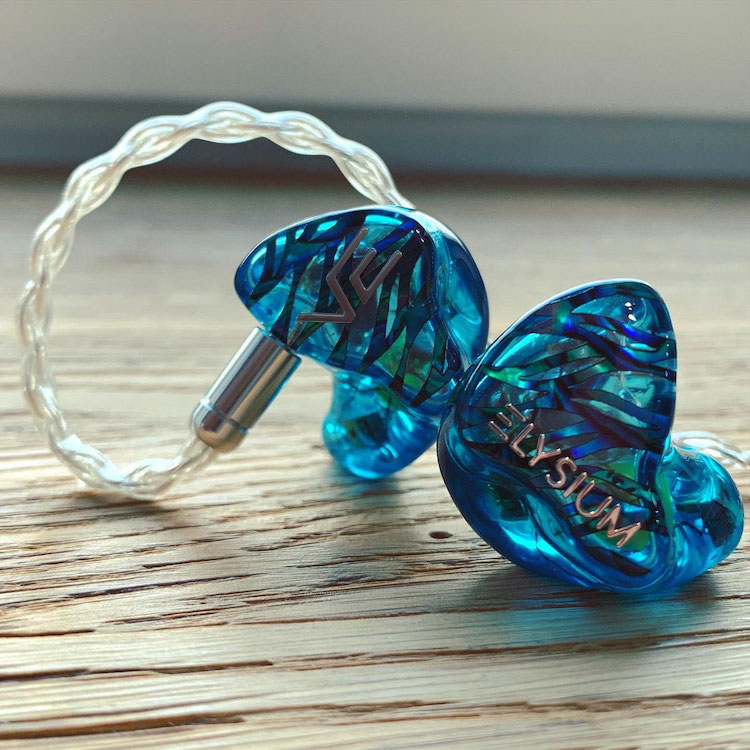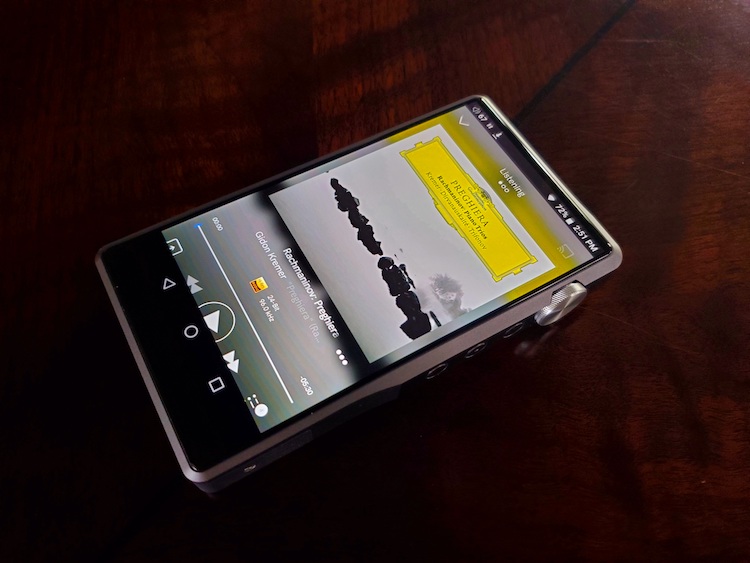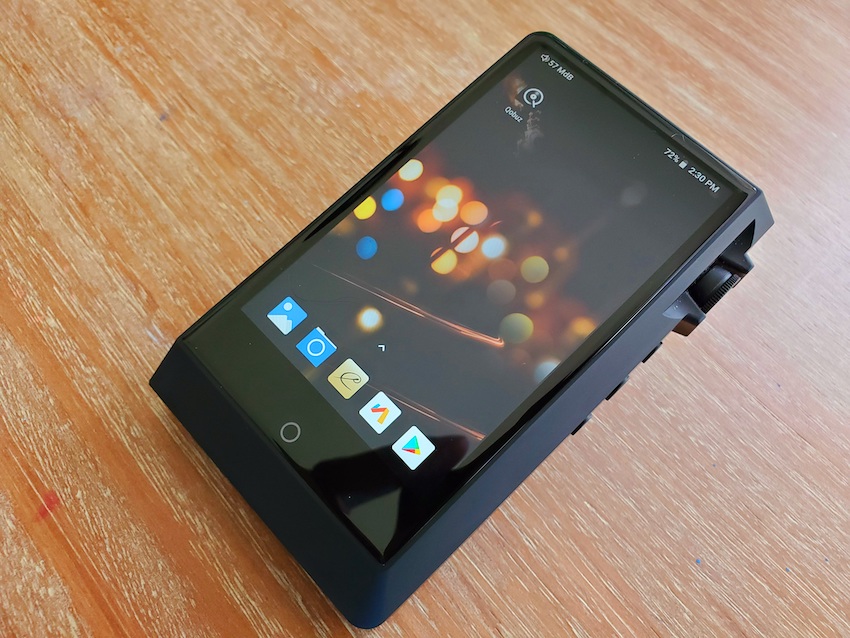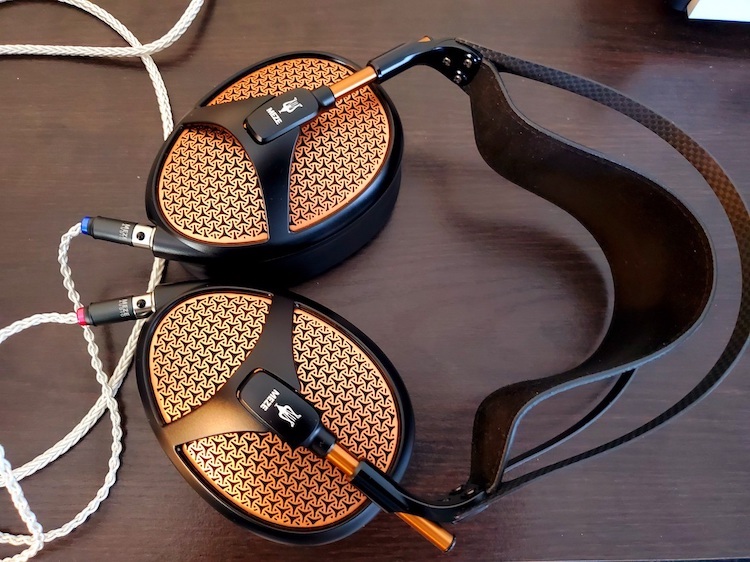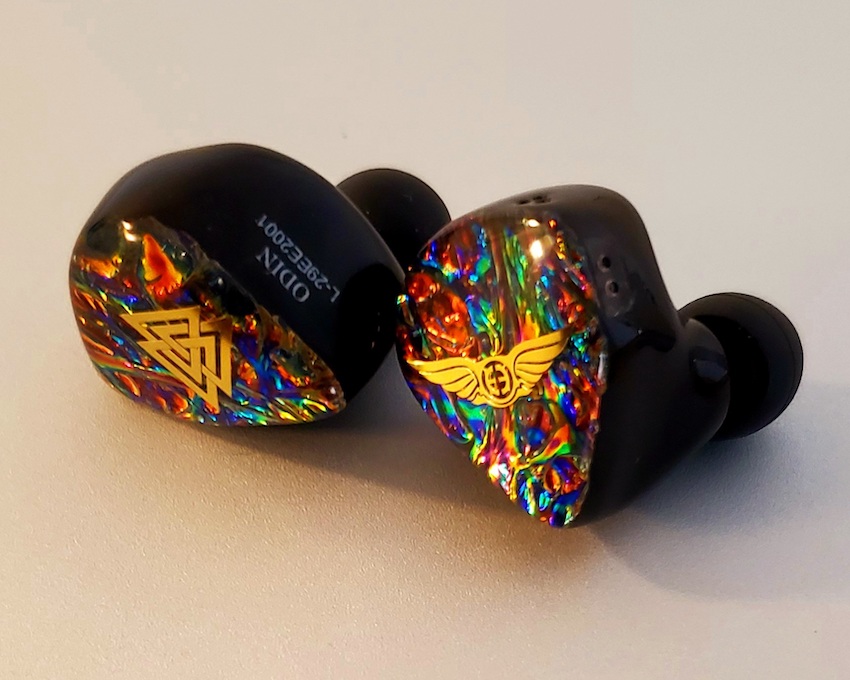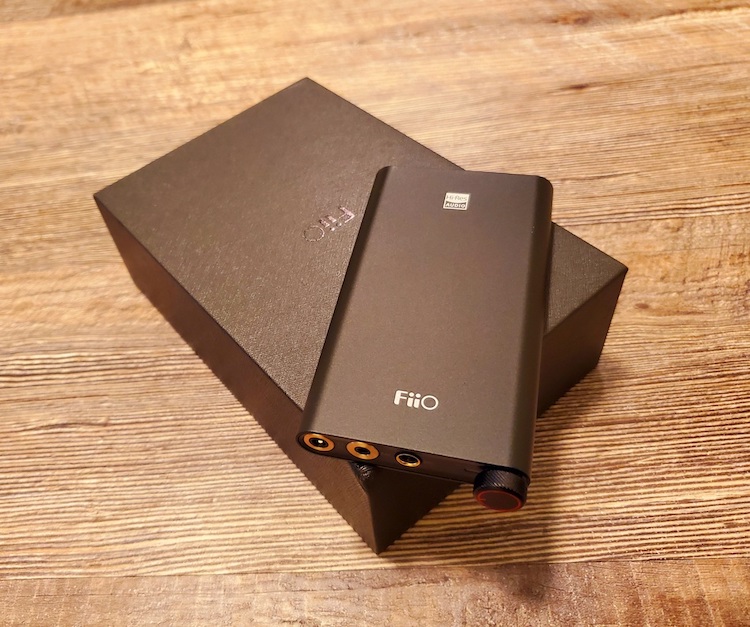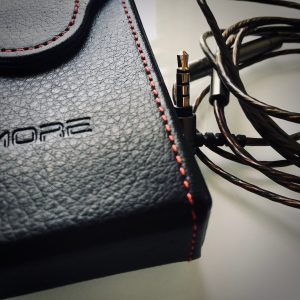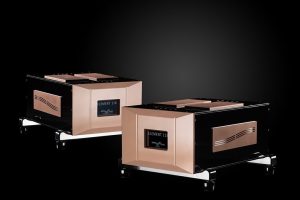The In-Ear-Monitor (IEM) company VISION EARS was founded by Marcel Schoenen, a former guitarist and singer for the band SUIDAKRA (folk-metal), and Amin Karimpour, a design and IEM enthusiast with an "exceptional love for detail1." The two met while working for a leading German IEM company. And it would be a shared vision—for quality, product design, and customer service—that would see Marcel and Amin starting their own IEM company, a number of years later.
In 2013 "with a small bag of money and a way bigger bag of cojones," the duo launched VISION EARS, nestled in Cologne's central south region, near Germany's western border. Shortly thereafter their vision and enthusiasm would draw to them a team that was as passionate about IEMs as were they. And in 2014 VISION EARS introduced its first two products—the VE6 and the VE6 Xcontrol—to wide acclaim. Over the ensuing years the company would produce a number of IEMs—VE2, VE3, VE4, VE5, VE8—and various custom inner-ear-monitors (CIEMs), that would likewise gather acclaim and near cult status across Europe. Fast forward to October, 2020 and by all accounts and measures VISION EARS has happily left behind startup-status and has enjoyed a, decidedly, good run of both its universal and its custom IEMs. Its latest Universal IEMs are the ELYSIUM, the ERLKÖNIG (sold out), and the EVE 2020, currently under review.
The EVE or "Exclusive Vision Ears" represents a new concept for VISION EARS, wherein a Limited Edition is produced each year, and retired once the lot has been sold through or the year in question has ended. The following year will see a new universal model that is both different in "concept and tuning," which might incorporate more drivers or less, but always with a unique design aesthetic. This year's model—the EVE 2020 is a six-driver model that sports a rather beautiful candy-apple red face and pale olive color motif for its body. And in terms of what VISION EARS believes you should expect from the EVE 2020, they are very straightforward:
"Expect a sound which is highly dynamic and musical. With a deep but tight bass. With rich and naturally textured mids. And with crisp and sparkling highs, bringing a fresh breeze into its well balanced sound. It is an extraordinary composition of drivers that perfectly fit together and create a stellar performance of harmony."
Rarely, in my experience, does a manufacturer's product claim or marketing pitch match up with the actual traits, abilities, specifications, or sound of the product in question. There are, however, exceptions.
Refrain: Unlike most reviews, this review will be non-sequential, as it will start with how the headphones actually sound and not the process of physically "undressing" them and/or laying out their various parts, specifications, etc. Think of this review then, as a non-linear movie—Memento, Kill Bill, Arrival, Eternal Sunshine of the Spotless Mind, The Terminator, Dark City, In the Shadow of the Moon, etc—that, likewise, starts at the end and winds its way to the beginning.
The Sound
The VISION EARS EVE came fully burned-in, which was an actual treat! No week or two week long burn-in sessions truly help to bring efficiency and focus to a review. Though I am certainly aware that not all manufacturers have this luxury, given the pressing needs of their businesses. But for reviewers it is a very good thing!
Some might think the EVE an anomaly for what it does in service of the music, with its outstanding transparency—detail, microdynamics, articulation—its superb musicality, its speedier than The Flash2 transients, and its top to bottom coherency. However it is for us, very much in line with what we consider the Holy-Music-Lovers-Grail.
But there's more. The EVE's top to bottom coherency, naturalness, black-quiet background, and excellent articulation, not to mention its price point ($1300), make it very competitive, performance wise, with far more expensive offerings.
The VISION EARS EVE's volumetric cube—its soundstage—is quite expansive in its width, depth, and height, though the Ne Plus Ultra—the highest point capable of being attained—IEMs would better it, but at much greater costs. The EVE's positioning, layering, and separation are also exemplary and summon the intimate, the concert stage, or the concert arena, when called for. To date, I've sent back enough ultra-high-priced IEMs, unreviewed, to understand when an overachiever is "in the house."
The VISION EARS EVE was reviewed in single-ended mode, with its stock cable, and the medium-sized, Spinfit eartips. The EVE was partnered to the Cayin Audio N6II/A01, the iBasso DX220/AMP1 Mk II, and the AudioQuest DragonFly Cobalt.
Bass
I am laughing now as I listen to Eiji Oue's "The Firebird Suite (1919 version): VII Finale" (Stravinsky, Reference Recordings), as there are those who have actually written that the EVE cannot reach deeply into the Stygian depths of the Holy-Bass-Head-Grail. Well, the EVEs can and are doing just that. I listen to this movement with the Cayin N6II/A01 allied to the EVE and the music is powerful and impactful, as potent rumblings signal each bass note's arrival. Reviews, of course, are subjective and systems synergy is as the dark matter in the room that few appear to see or, perhaps, comprehend in terms of its affect upon the system or IEM in play. Well, the dark matter was quite copacetic on this listening session and revealed ponderous bass for the EVE (Spinfit Medium).
However, what makes the EVE truly amazing is everything else that the EVE brings to the bass region, inclusive of incredible transparency, luscious tonal / timbral differentiation, transient speed, and body.
Another favorite for discerning the bass response of a given IEM or headphone is Massive Attack's "Angel" (MEZZANINE, Virgin). The EVE may well be laughing too as it delivers a taunt, driving bass line, across a rather wide stage, that alights to and thumps at one's inner core. And yes, the EVE is also fast, detailed, articulate, and powerful. Head bobbing? You bet. It's the dark matter.
Midrange
While gold can be found across EVE's various frequency segments, the midrange is where the motherload can be found. Wondrously engaging comes to mind, as does sumptuous. I imagine, for those who consider themselves music lovers above all else, the EVE may well taunt hereafter.
Melody Gardot's "C'est Magnifique" (Sunset in The Blue, Decca) begins and a guitar enters hauntingly, its style Bossa Nova. Melody's voice follows textured, sensual, and engaging. Enter then Antonio Zambujo his voice rich, lyrical, of a Bossa Nova sensibility, beautifully engaging and textured. The EVE conducts this song as a rapturous musical interlude mixed heavily with transparency—detail, microdynamics, articulation, and lightening fast transient. An analog-like ease and smoothness characterize the EVE's midrange as associated with the Cayin N6II/A01 and also the iBasso DX220 AMP1 Mk II, that is loaded with detail.
A favorite now for ferreting out in-room-soundstage-projection is Joan Shelly's song "Wild Indifference" (Joan Shelley, No Quarter). There is this point at one minute and forty-five seconds into this song wherein a tambourine enters. Depending on one's setup and the IEM/headphone in question, the tambourine may be buried in the mix and lost entirely, somewhat into the room, or well into the room and very tactile and palpable. As zero hour (minute) approaches, Joan Shelly's voice is transparently rendered, intimate, and crystal clear, as every word and phrase are beautifully articulated. The tambourine appears and it is well into the room, behind me, and it is very tactile, palpable. Soundstage? (Expletive) yes!
Treble+
The Kronos Quartet's "Aaj Ki Raat—Tonight is the Night" (Kronos Caravan, Nonsuch) begins, and at play across this track in addition to the violin, viola, and cello are a mix of exotic instruments from the Hindustani tabla to the Lebanese nay to the Iranian kemancheh, tar, and tombak. The EVE renders this mix of instruments with aplomb and nary a trace of shrillness or harshness or glassiness. Its highs are clear, fast, well extended, sweet, with a transparency that digs down to fingers across strings, drum skins, and cello bows.
Just one more, please. Vilda Frang's "Allegro Molto II" (Veress String Trio/Bartók Piano Quintet, Alpha) plays, and there is quiet and air and raps, plucks, bows, and even the knuckling of a violin. The EVE's transparency again renders crystal clarity, timbral / tonal distinction, weight, space, and positioning, sublimely. And as the trio of violin, viola, cello reach sweetly for the limits of treble extension, again, shrillness or harshness or brightness or glare are vanished, entirely.
The Wrappings and Accessories
The VISION EARS EVE comes in a black, rectangular box, with raised, crisscrossing, black lines, as design element, with its logo stamped in purple foil at the top center of the box. The ends of the outer rectangular box are purple and are exposed as a result of its top being a fold-over that is magnetically attached to the front panel.
Once the front flap is detached from its magnetic anchor and folded back, the EVE's inner contents are exposed. Contained within the EVE's box are as follows:
- 1-pair of EVE IEMs
- 1-"reliable standard" 1.2m, black cable
- 1-round, black, metal, carrying case
- 3-pair of Spinfit tips (S, M, L)
- 1-instruction manual
- 1- 3.5/6.3mm adapter
- 6-earwax meshes w/a guide on their use
- 1-bottle of cleaning spray
- 1-cleaning tool
- 1-microfiber cleaning cloth
- 1-instruction manual
- 1-warranty card
The combination of the outside box color—black and purple—and the EVE is, well, an interesting design choice. One would expect from the outer box colors a purple or black or black and purple IEM. The candy-apple red face and pale olive shell of the EVE are quite the surprise to one unfamiliar with the EVE's actual design, prior to unboxing. Though both design implementations are, on their own, well done. It is, nonetheless, an interesting, combinative, design choice.
Design - Look and Feel and Fit
The VISION EARS EVE is a beautifully designed and stunningly color-matched IEM that employs a muted olive for its shell and a rather stunning candy-apple red for its faceplate, as mentioned above. Their build quality speaks to a rather flawless execution (outside and in) and, no doubt, product longevity, and an "attention to detail" that happens to serve as the philosophical mandate of VISION EARS.
The EVE's nozzle, however, is quite large and there will be eartips that simply do not fit. Further, it will not be easy to affix even the ones that do fit. It should also be noted that the EVE is extremely sensitive to eartips. Given the proper eartip seal, the EVE is sublime in every manner. The wrong eartip and the EVE will become something else entirely, a contradiction. But it will only take one eartip to maximize the EVE's multifaceted and undeniable strengths. Chose well (a Spinfit medium provided musical nirvana).
The EVE utilizes six (6) Knowles Balanced Armature (BA) drivers in a three-way configuration, which houses two (2) low, two (2) mid, and two (2) high BAs.
The EVE's cable is a VISION EARS "reliable standard," which is constructed as a 4-wire, silver-plated, copper, wrapped in a black jacket, with a 3.5mm jack termination.
Specifications
- Driver Type: 6 Balanced Armature Drivers (3-Way)
- Freq. Res.: 10Hz-40 kHz
- Sensitivity: 120.5dB (@1kHz)
- Impedance: 25 Ohms
- Plug Size: 3.5mm gold-plated
- Cord: Black, 4-wire, silver-plated copper
- Cord length: 1.2m
- Weight: 6.6g without cable
Drivability
The VISION EARS EVE has a low impedance (25Ω -Ohms) and a high sensitivity (120dB). They are, as a result, very easy to drive and they work well with numerous devices ranging from smartphones to computers to the entire AudioQuest DragonFly family to DAPs to desktop systems. The EVE sounds wonderful with all of the above and scales quite nicely with higher powered, more apt equipment. Though due to the high sensitivity of the EVE source matching should definitely be considered. Tubed DAPs/Amp/DACs may result, due to the EVE's high sensitivity, with some hiss.
Comparisons
It came down to four songs that would be utilized to help differentiate the various IEMs. The comparisons were done using the following four tracks/songs—Joan Shelly's "Wild Indifference" (Joan Shelly, No Quarter), Olafur Arnalds' "Árbakkinn" (Island Songs, Mercury (Universal France)), Massive Attack's "Angel" (MEZZANINE, Virgin), and Eiji Oue's "The Firebird Suite (1919 version): VII Finale" (Stravinsky, Reference Recordings). The various IEMs were partnered to the iBasso DX220 AMP1 Mk II.
VISION EARS VE8 ($2600) : (120dB SPL/ 22 Ohms - vol. 111/150)
The VE8, relative to its sibling, had a tuning that was decidedly more neutral, though still natural and musical. The VE8 rendered the song "Wild Indifference" (Joan Shelly, No Quarter) with a bit more resolution and slightly better articulation of Shelly's voice. The tambourine did show up on cue and in the room, however, it had less in-room-weight than with the EVE. The EVE also provided more body and texture and richness to Shelly's voice. With "Árbakkinn" (Island Songs, Mercury (Universal France)) the VE8 was quite extended, but there were points of sibilance that were entirely absent with the EVE. And with both bass heavy tracks—Massive Attack's "Angel" and Eiji Oue's "The Firebird Suite (1919 version): VII Finale"—there was a decided diminution of bass and it was not as taunt nor as thunderous as it was with the EVE. Overall, the EVE delivered a more powerful, taunt, reverberant bass, more body, a more engaging, musical, and rich midrange, and sweet, extended, sibilance-free highs, that its higher priced sibling simply could not.
VISION EARS ELYSIUM ($3499) : (105dB SPL/ 16.4 Ohms - vol. 120/150)
The ELYSIUM, like its siblings, is very eartip sensitive. So if you're getting poor sound, it may well be the eartips. I have done well with the Spinfit tips, as mentioned above, and would recommend their use with the ELYSIUM. Firstly, if I believed the EVE to have its hoard of gold stashed away in its midrange, then there are diamonds, platinum, hordes of bitcoin, and "gold-pressed latinum3" stashed away in the midrange of the ELYSIUM. But I get ahead of myself. Joan Shelly's "Wild Indifference" (Joan Shelly, No Quarter) is lush, wonderfully engaging, textured, and reminiscent of Single Ended Triodes (SETs) in the best sense. On this the EVE is no longer in the driver's seat, the ELYSIUM is. The tambourine, by the way, is beautifully present, well into the room, and of rather good substance and palpability. Were I not familiar with this track, I would turn to see who is in the room, which I have done more than once. "Árbakkinn" (Island Songs, Mercury (Universal France)) now plays and there is very good treble extension, across this track, commensurate with a reference priced IEM and, as such, the highs are more in the vein of a neutral representation, exceptionally extended but they are still sweetly rendered. However, the ELYSIUM with both bass heavy tracks—Massive Attack's "Angel" and Eiji Oue's "The Firebird Suite (1919 version): VII Finale"—provides good bass but not with the thunderous potency, nor the slam, nor the tautness of the EVE. I understand, however, that the custom version of the ELYSIUM does not suffer this problem. Nonetheless, taken as a whole, the ELYSIUM is clearly in the drivers seat and I imagine the custom version even more so. A dynamic driver in the midrange? Beautiful!
oBravo EAMT-2C ($3000): (105dB SPL/ 16 Ohms—vol. 105/150)
The oBravo EAMT-2C, at over two times the price of the EVE, proved itself from the very first note of Joan Shelly's "Wild Indifference." With the oBravo in play this song was now embodied by an analog-like ease, sublime musicality, incredible three-dimensionality, and a truth of tone / timbre that was breathtaking! Yes, the tambourine was in the room, solid, palpable, several feet away, and behind me! Next, Olafur's "Árbakkinn" was likewise imbued with a naturalness and ease and richness, and, yet, complete with a top to bottom transparency that was teeming with detail. Few, if any, IEMs can match this performance. Finally, the oBravo with both bass heavy tracks—Massive Attack's "Angel" and Eiji Oue's "The Firebird Suite (1919 version): VII Finale"—rendered thunderous, gut wrenching, taunt, and, dare I say, ominous bass! Here was a full-sized planar magnetic masquerading as a small, though beautifully constructed, IEM. I was gobsmacked when I first heard the oBravo EAMT-2C. I am gobsmacked once again. However, at over two times the price one should expect such a comparison and so it was. This, of course, takes nothing away from the much less expensive EVE and given the EVE's extension at both ends of the spectrum, its wondrous musicality, and its superb transparency, it can truly be said to be, relatively speaking, a bargain.
Synergy
iBasso DX220 AMP1 Mk II
The marriage of the iBasso DX220 AMP1 Mk II and the EVE was beautifully synergistic and while very musical, brought forth a very informative transparency, that dug deep and rendered detail with a beauty, and ease that captivated for long hours. The very high sensitivity (120dB), however, of the EVE did not make it a synergistic match for the iBasso's AMP9, as there was noticeable hiss when the two were paired.
Cayin N6II/A01
The EVE as allied to the Cayin N6II/A01 was remarkably musical, rich of tone / timbre, wondrously transparent, which unearthed great detail and dynamics (macro, micro), and with an ease reminiscent of good vinyl and tubes. This is truly a wondrous combination that can go quite deep when required, venture into the stygian bass head depths, and then quite high and with great and sweet extension.
Conclusion
The VISION EARS EVE is an exceptional IEM that beautifully covers all the bases—sweet, extended treble, thunderous bass, striking musicality, and a marvelous transparency. And as mentioned above, I have turned away ultra expensive IEMs, for that matter, unreviewed, and unmentioned, thereafter, that did not match up.
Prior to this, I thought the Fiio FH5 ($259) an outstanding IEM relative to price / performance ratio, in that it could easily compete with far more expensive IEMs. The VISION EARS EVE now takes over that designation.
Bummer though, that the VISION EARS EVE is no more after the end of this year! That I will count as a "Con." The above said, the Vision Ears EVE ($1300) is a music lover's dream, which we very highly recommend and give to it our HIGH NINES AWARD for spectacularly capturing the Holy-Music-Lovers-Bass-Head-Grail. Bravo!
Music - Qobuz Exclusively
- Alexander Tharaud, Tharaud Plays Rachmaninoff
- Omar Sosa, Ballads, Calma
- Patricia Barber, Verse
- Rickie Lee Jones, Pop Pop
- Sade, Lovers Live
- Sheku Kannah Mason, Inspiration
- Tracey Chapman, Where You Live
- Olafur Arnalds, Island Songs
- Melody Gardot, My Worrisome Heart
- Melody Gardot, Sunset in The Blue
- Eiji Oue, Stravinsky
- Hilary Hahn, Tchaikovsky
- Mechell Ndegeocello, Bitter
- Maxwell, Maxwell's Urban Hang Suite
- Sarah Jarosh, Undercurrent
- Igor Stravinsky, Stravinsky: Le sacre du printemps (The Rite of Spring)
- Annie-Sophie Mutter, Mendelssohn, Brahms: Violin Concertos
- London Grammar, If You Wait
- Stevie Wonder, Innervisions
- Marvin Gaye, What's Going On
- Miles Davis, Kind of Blue
- Jóhann Jóhannsson, Orphée
- Dave Holland, Emerald Tears
- Kremer, Trifonov, Dirvanauskaite, Preghiera/Rachmaninov Piano Trios
- Massive Attack, Mezzanine
- Vilda Frang's, Veress String Trio/Bartók Piano Quintet
Ancillary Equipment
- Meze Empyrean
- Meze 99 Classics
- Rosson Audio RAD-0
- OBravo EAMT-2C IEMs
- Final Sonorous III
- FiiO FH5
- iBasso DX220 AMP1 Mk II
- Cayin N6ii/A01
- Cayin N6ii/E01
- iFi Pro iDSD
- AudioQuest Cobalt
- AudioQuest Red
- AudioQuest Dragon Tail
- Samsung S10
- Apple X iPhone
Pros: Incredibly transparent, sublimely musical, natural, and beautifully engaging. Lightening fast transients. Competes at multiples of its pricing. Beautiful.
Cons: Very eartip sensitive! Limited Edition.
1 - All quotes attributable to VISION EARS.
2 - Trademark of DC Comics
3 - Attributable to Deep Space Nine a Star Trek spinoff and it is as air to Ferengi traders.
VISION EARS EVE IEMs
Retail: $1300
VISION EARS
Luxemburgerstr. 51
50674 Cologne
GERMANY
+49 (0)221 - 80064334
Kermit Heartsong is a published author, writer, and working screenwriter, who brings an established writer’s approach/perspective to Personal HiFi reviews. Kermit has owned numerous high-end and ultra-high-end components/systems and has tested numerous pieces of audio gear over the course of his life. And he is a music lover first and foremost with regard to the types of Personal HiFi equipment that he enjoys and enjoys to review.
In conjunction with Positive Feedback, Kermit, as an Associate Editor for PF, will focus on Personal HiFi and Headphones for the venerable and long standing audio magazine. Kermit is currently Managing Director of AudioKey Reviews. AudioKey Reviews' mandate is to review Personal HiFi equipment from headphones to DACS to Amps/DAC to IEMs and, in doing so, to seek out that which is, above all, musical, transparent, and engaging.
For more information on the AudioKey Reviews HIGH NINES AWARD, please visit us HERE.




